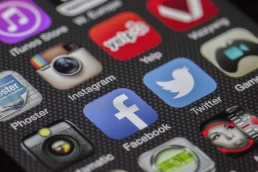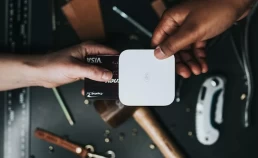When you enter a mall and are given a flyer by a fast-food service crew what do you do next? Do you patronize the restaurant or do throw the flyer in the trash can?
While watching your favorite TV show what do you usually do when a commercial comes at the most exciting part? Do you switch channels, check for phone messages, go to the bathroom, get a snack or do you sit through the commercial?
How do you react when in the middle of an important meeting your phone rings and it turns out to be an agent of your mobile carrier offering a new promo? You tell her to call some other time, but she is caught up in reading the spiel that she just keeps talking. Do you feel annoyed? Frustrated? Irritated? How do you feel about your mobile carrier?
These questions frame the dilemma faced by businesses that implement traditional and outbound forms of marketing for promoting their products and services.
Table of Contents
ToggleThe Inefficiencies and Ineffectiveness of Traditional and Outbound Methods of Marketing
Traditional marketing methods use marketing collateral such as flyers, posters, banners, streamers, and billboards for local area marketing purposes which cover a 5-kilometer radius from the location of the business. For a larger audience, traditional marketing involves newspaper ads, press releases, and radio and TV commercials.
Outbound marketing methods take the digital route. Usually, a company contracts a call center to call or send SMS to a list of leads. The call center can also send e-mails to targeted prospects.
These methods have been around for some time and are widely ineffective for a good number of reasons:
1. Highly expensive
Producing marketing collaterals can be very expensive to produce. You need to hire a graphics designer who may require a photographer.
Marketing collaterals will cover Point-of-Purchase materials and newspaper ads. You may also have to hire a copywriter. Then you have to contract a printer to produce the collaterals. Print shops entice you to run a higher volume to avail of discounts. A larger volume will be cheaper per unit cost, but it could affect your cash flow.
For press releases and advertorials, you will need to hire the services of an agency to schedule interviews and publication with the broadsheets or magazines.
How much will these cost? A friend of mine who frequently ran POP materials for monthly distribution to support his restaurant estimates he spends an average of Php30,000 to 50,000 per month to produce flyers, posters, and streamers. For the press releases, advertorials, and newspaper ads that come out every six months, he estimates spending Php350,000 every year.
Total ad expenditure will depend on average gross sales per month. He allocates 6% of sales to
marketing and promotions.
2. Highly inefficient
When you distribute flyers, post streamers, and newspaper ads and run TV and radio sports, how will you measure your ROI? Some put tracking numbers on the flyers, conduct surveys, and incorporate a call-to-action but these are inaccurate.
Statistically, 86% of viewers skip TV ads even when they have the programs recorded. As far as radio ads are concerned, the younger generation is less interested in AM and FM music opting to listen to the downloaded material. Only 34% of those in the 18-29 age bracket listen to the radio from 9:00 am to 5:00 pm.
3. Intrusive Forms of Marketing
These forms of marketing are also considered intrusive. The process of distributing marketing and collateral is more random.
Many consumers do not appreciate having collaterals waved or shoved in their faces. How do you feel when you open the Sunday paper, and more flyers fall out? Or how about when you get inside your car and find flyers inserted into your wipers?
The worst offenders are the telemarketers who call your mobile or landline even on Sundays to offer services or talk about the latest promos. Or how about the endless text promos that make it to your inbox every day? The same goes for contact centers that flood my e-mail with marketing collateral. Personally, it doesn’t put the client in my good graces.
4. Unsustainable
Excess flyers, posters, and copies of the print ads all end up in the same place once these have done their purpose: the trash can. Some of these materials especially those for banners and streamers are not recyclable. So much paper is produced and wasted.
Still, businesses continue to employ these tactics simply because consumers are already familiar with them. Commercials are part of the TV experience whether we like the ads or not. The same goes for newspaper ads.
A more effective and efficient form of promoting your products and services is inbound marketing. It has more benefits and offers none of the disadvantages of traditional and outbound marketing methods.
What is Inbound Marketing and How will it benefit your Online Business?
Inbound Marketing is a data-driven approach that is designed to attract people to your brand and convert them into loyal, paying customers. There are many differences between Inbound Marketing and Traditional and Outbound Methods of Marketing.
These differences are also the benefits Inbound Marketing has over both Traditional and Outbound Marketing.
1. Inbound Marketing is Inexpensive
The first person you have to hire is a digital marketer. Most digital marketers have a working knowledge of website design and development, SEO, content marketing, link building, and social media marketing.
A digital marketer operates lean; he only needs a content writer, an SEO professional, and an assistant to manage the posting schedules. Many are paid on a per productive hour basis which means you only pay them for work rendered.
Digital marketers usually present a timetable that includes a turnover schedule. This allows you to stick to your budget and gives you the option to take over the management of the campaign at the end of the timetable.
2. It is Highly Efficient
When you direct your marketing strategies online, your objective is to capitalize on a market consisting of 3.3 Billion Internet users. The statistics supporting Inbound Marketing are overwhelmingly positive:
- Generates 67% more leads
- Websites receive 434% more indexed pages
- Inbound leads cost 60% less than outbound leads
- 94% of business decision-makers prefer inbound-driven data to those identified in ads
- Websites receive 97% more indexed links
The combination of a low-cost strategy with better results means Inbound Marketing generates higher ROI than either Traditional or Outbound Marketing.
3. Non-Intrusive Form of Marketing
The key differentiator between Inbound Marketing and either Traditional or Outbound Marketing is that Inbound is non-intrusive.
Inbound Marketing uses tactics that pull people in while both Traditional and Outbound Marketing
methods push collateral out into the market. Thus, Inbound Marketing adopts a targeted approach.
It addresses a need, issue, or matter of specific interest to the market. It has a purpose that sets the direction and greater focus on the implementation of its strategies. It knows whom to target and directs its resources to pre-qualify potential buyers for your products and services.
With Inbound Marketing, you don’t go to the market. The market goes to you!
4. Inbound Marketing is Sustainable
Because Inbound Marketing is delivered through the vast channels on the Internet and creates data-driven content that is delivered to a targeted audience, its materials are sustainable.
You don’t use and waste paper, and content can be renewed, re-posted, or recycled for another period.
Your intellectual property will be evergreen and last a lifetime!
The Different Types of Inbound Marketing Strategies
The Digital Marketer has many tools of the trade to design your Inbound Marketing campaign. How he approaches the design of your campaign will depend on the following:
- Your Purpose and Vision
- Your Target Market
- Product and Services Positioning
- Short, Medium, and Long-Term Goals and Objectives
- Marketing Budget
The Digital Marketer will sit down with you and go over these items as well as present a questionnaire intended to give him a greater understanding of your business and its industry.
Once the information has been provided, the Digital Marketer will conduct research and present a Creative Brief, which will become the blueprint for your Inbound Marketing campaign.
The Inbound Marketing campaign can include all or a combination of the following strategies and techniques:
1. SEO or Search Engine Optimization
Search Engine Optimization is often referred to as the center of the Inbound Marketing universe.
Think of your online business website as the Sun being orbited by the different inbound marketing strategies such as social media marketing, blogging, article writing, link building, and digital advertising tools such as Pay-Per-Click advertising or PPC.
The principles of SEO act like the forces of gravity; they pull people toward your website. All these online tools create inbound traffic and SEO drives them toward your website as qualified leads where they can be converted into sales.
SEO is the process of improving the organic search ranking of your website in the search engine’s SERP. SERP stands for Search Engine Results Page. Whenever you launch a search query, the websites that are indexed and selected show up in the SERP.
A search query is launched by entering descriptions of the required information. These descriptions are ranked in terms of frequency and the most popularly used ones are referred to as keywords.
SEO uses keywords as the cornerstone of its strategy. Every aspect of the inbound marketing campaign from the website to the tools and processes used will incorporate keywords. Keywords make it easy for search engine crawlers to find and index your webpage.
2. Social Media Marketing
Social media has become one of the biggest influencers on the Internet largely because of its large community.
Of the 3.3 Billion people on the Internet daily, 2/3 or almost two billion are on social media. Facebook
alone has 1.5 Billion users every day!
The power of social media lies in the ability of the user to share, post, or comment.
How often have you been influenced to try a new restaurant because someone in your community posted his or her experience complete with pictures?
How many establishments had their fortunes affected because of a post or image that went viral? Do you remember the image posted by a consumer who placed a footlong sandwich beside a ruler and proved patrons were not getting a footlong? That franchise had to do damage control and worked to rectify the issue.
Social media is virtual “word of mouth” advertising. It is very powerful because it is pure and organic. If you want your online business to succeed, you must invest time and resources in social media marketing.
3. Content Marketing Process
This is the process of using fresh, unique, relevant, and engaging content to compel its users to action, attract and retain a targeted audience with the goal of converting interest into sales.
As most digital marketers say, content is king.
Digital Marketers can utilize many different types of media as part of the content marketing process such as videos, images, and podcasts. But the cornerstone or the centerpiece of content marketing is blogging.
The statistics on blogging are highly encouraging:
- 23% of Internet time is spent on blogs.
- 77% of Internet users read blogs.
- 61% of consumers’ purchasing decisions were influenced by a blog.
- 67% more leads are generated by B2B marketers that use blogs.
- 37% of content marketers believe blogging is the most important inbound marketing strategy.
In your social media account, how many groups do you follow because of the quality of their blogs? You may not be aware of it but you most certainly liked their page because of the consistent quality of their content.
Consumers think the same way. If they like the content you put out, they will follow and regard you as an expert or a valuable resource. How you represent yourself, and your ideas in your blog content will be indicative of what your online business website is like. If people trust you, they will trust and patronize your business.
4. Link Building
This is a popular technique used in SEO where the number of inbound links to your website is increased to improve visibility.
You can make arrangements with a community of bloggers to link to your website in exchange for sharing or guest writing a series of blogs. You could also reciprocate by having a few bloggers guest write on your website.
Link building not only increases your website’s visibility but also enhances your reputation as an expert. This is why you should be selective with the websites you plan to build links with. Choose websites that have a good reputation and a large number of followers.
In 2014 however, Google decided to crack the whip on websites that abused link-building practices. There were unscrupulous SEO practitioners who would link just on any website even if the products or services had no relevance to the business. Think of a cigarette manufacturer linking its website to a health and fitness website.
But used with strategy and purpose in mind, link building is a powerful and effective tool for increasing patronage on your website.
Putting it Altogether
In an Inbound Marketing campaign, the Digital Marketer is the Project or Campaign Manager. He usually assembles the team and works with them in conceptualizing the overall campaign.
It all starts with SEO. Your website pages, its content including text, videos, and images encompassing even the social media accounts must be optimized. The SEO professional undertakes extensive keyword research on the words and phrases that are often used to search for similar products and services in your industry.
The SEO professional works with the website developer on the keywords meta tag and meta description tag to help the web search crawlers find and index the pages.
Keywords are also distributed and discussed with the content writers. Blogs, articles, and web copy must use the keywords strategically. If you use too many keywords on a blog or post without rhyme, reason, or relevance to the purpose of your online business website, the search engine will penalize you down the rankings.
A good example would be how to use keywords on a blog. Ideally, for SEO purposes, a blog post must be 1,600 words in length on average. The longer the blog post, the better. If your content is relevant and engaging, it will keep the reader longer on your web page and lower the bounce rate.
For a 1,600-word blog post, it should use the main keyword or main keyword phrase no more than ten times. The key areas would be the following:
- Title
- Within the first 100 words of the first paragraph; ideally the first sentence.
- Six to seven times within the body of the blog.
- Once at the concluding paragraph.
An Inbound Marketing strategy should be the primary component of your marketing and promotional campaign to support your online business website.
In many ways, it should be referred to more as a process than a strategy because it will take the campaign time to gain traction and bear fruit. On the other hand, its strategy will always evolve to conform to the changing markets.
Thus, Inbound Marketing is an ever-evolving process that unlike other marketing methods will give you the means to adapt to changes in demand, preferences, tastes, and demographics.
In this day and age of global economic uncertainty, Inbound Marketing is your best approach to growing your online business.
Roel Manarang is a seasoned entrepreneur who helps businesses succeed through design and digital marketing. With over 10 years of experience, he has assisted 170+ global companies. Roel is the founder of Workroom, a digital marketing company, and Tycoon Philippines, an acclaimed business and finance blog. Find him on LinkedIn.





